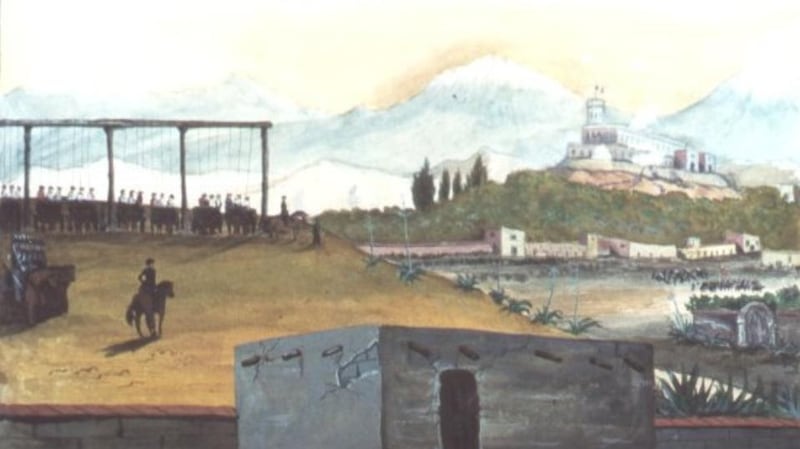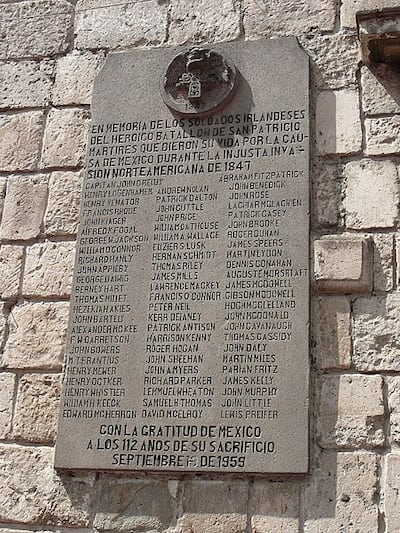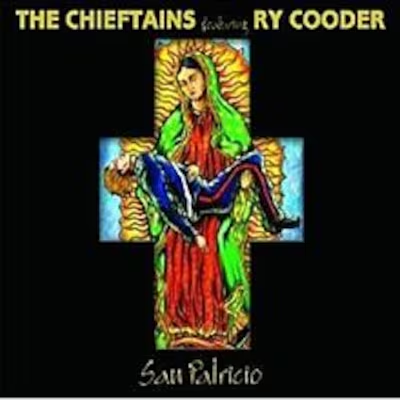Just after dawn on September 10th, 1847, the residents of San Ángel, a village on the outskirts of Mexico City, awoke to the sound of carts rattling into the Plaza de San Jacinto. The carts contained a group of ragged-looking prisoners and their guards, blue-uniformed members of the United States army.
The villagers silently watched one of the carts draw up alongside the gallows, which had been specially constructed in the centre of the plaza. The gallows consisted of a 40-foot-long beam, from which hung 16 nooses. The prisoners were then transferred onto eight mule-driven carts, which were waiting beneath the gallows, and their heads placed in the nooses.
Having been given the nod by one of the US army officers overseeing proceedings, five Catholic priests, who had been waiting by the door of the church, climbed onto the carts and began hearing the prisoners’ confessions, and administering the last rites.
Once the priests were finished, the order was given to the Mexican muleteers to drive the carts forward, and the prisoners fell to earth. The lucky ones died quickly. One of the prisoners, Captain Patrick Dalton, was not so fortunate, slowly choking to death.

Traitors
The 16 men who died that day were members of the Batallón de San Patricio - the St Patrick’s Battalion - or, in short, the San Patricios, an artillery unit of the Mexican army, which saw action in the Mexican-American War (1846-48). The unit comprised volunteers from different countries, but, as the name would suggest, the majority were Irish. And in the eyes of the US army, they were deserters and traitors.
During the 1840s, the US army began recruiting the Irish immigrants who were arriving at American ports in their tens of thousands. The arrival of the Irish coincided with the rise of the nativist movement, whose anti-Catholicism extended into the upper echelons of the army. Many of the Irishmen serving in the US army during the war experienced racism and anti-Catholic prejudice, and opted to desert to the Mexicans.
They were led by Captain John Riley, from Clifden in Co Galway. Riley had served as a private in the US army before deserting to the Mexicans. In April 1846, he organised an artillery unit, comprised of Irishmen, the nucleus of the San Patricios. By the summer, there were 200 soldiers in the battalion, organised into two companies.
The majority of the artillerymen were Irish, but there were also Mexicans of recent European descent and other European-born volunteers, mostly Germans. Nevertheless, Riley forged a discernibly Irish identity for the battalion. Its flag was made of green silk, with an image of St Patrick embroidered in silver on one side, and a harp and shamrock on the other.
Legendary status
Under Riley's command, the San Patricios became an effective artillery unit. On February 23rd 1847, they acquitted themselves well at the Battle of Buena Vista against the superior guns of the US army. But it was at the Battle of Churubusco, on August 20th 1847, that the battalion acquired its legendary status in Mexico. Ordered to protect the retreating Mexican army, the San Patricios, holed up in a convent by the River Churubusco, bravely attempted to defend the road to Mexico City.

The following month, the US army marched into the Mexican capital, effectively bringing the war to an end. The San Patricios who had not died at Churubusco were court-martialled as deserters. Two days after the execution at San Ángel, Colonel William Harney oversaw the hanging of another thirty San Patricios on a hill close to the Mexican village of Mixcoac.
Those who escaped the death penalty were branded on the cheek, with a “D”, in order to identify them as deserters. They included Riley who grew his whiskers to hide the scars.
Riley was promoted to lieutenant-colonel in the Mexican army after the war, and was given command of the reformed battalion after the war. However, in July 1848, the government suspected the battalion of being involved in a planned rebellion. Riley was arrested and the unit was disbanded. In 1850, he was discharged with the rank of major on disability pay.
In the US, the San Patricios have, until more recently, been treated by historians of the Mexican-American War with little sympathy. It was Michael Hogan's The Irish Soldiers of Mexico, published in Guadalajara in 1997, which placed their story in the context of racial and religious prejudice in the US army, and emphasised the San Patricios' distinctively Irish - and, just as importantly, Catholic - identity.
In Mexico, the role played by the San Patricios in the Mexican-American war has long been acknowledged with a sense of gratitude. A plaque and a bust of John Riley marks the site of the executions in the Plaza San Jacinto, which is now part of Mexico City. In 2013, President Michael D. Higgins laid a wreath at Riley’s bust during a state visit to the country.
Riley saw the San Patricios as acting to protect a weaker Catholic nation which was under threat from the imperial designs of its larger, Anglo neighbour. He called on his countrymen to side with the Mexican people against the US army, which he claimed, “in the face of the whole world has trampled upon the holy altar of our religion”.

The spiritual meaning behind this act of solidarity is perhaps best encapsulated by the artwork on the cover of San Patricio, the album released in 2010 by The Chieftains and Ry Cooder, in collaboration with various Mexican musicians, in honour of the Irish battalion. Framed within the borders of a cross, it is an image of the Virgin of Guadalupe, the potent symbol of Mexican Catholicism, cradling the Christ-like body of a red-haired soldier.
Tim Fanning is a writer and historian. He is the author of Paisanos: The Forgotten Irish who Changed the Face of Latin America. He will speak about the history of the Irish in Latin America at Epic The Irish Emigration Museum in Dublin on March 14th (tickets available) and March 15th (sold out) at 6pm, as part of St. Patrick's Festival. Tickets cost €5 and are available at eventbrite.com. There is a free exhibition exploring the same theme for visitors to Epic, running until March 16th.


















